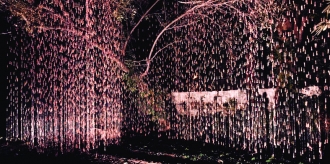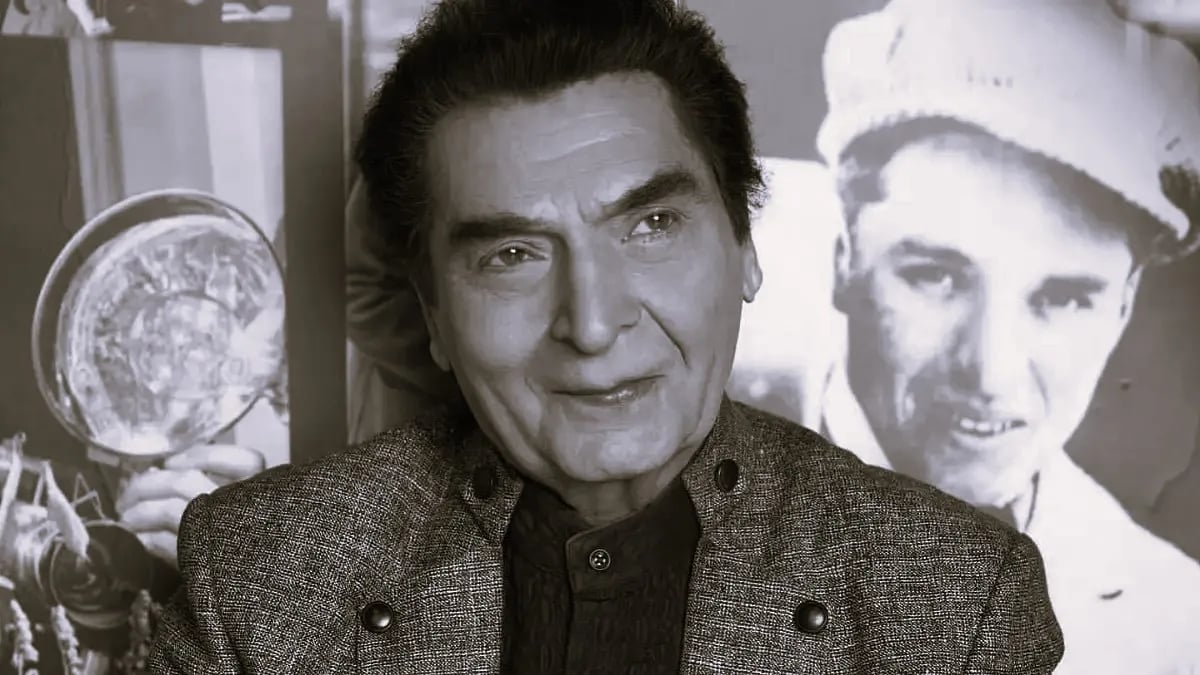Taking a walk at IGNCA, Chahal Mittal observes and understands that Manav Gupta uses pottery to make a statement on preserving the ecosystem and sustainable development.
Artist Manav Gupta has given a new meaning to everyday exotic. He has used earthen lamps, tea cups and smoking pipes, unremarkable in their simple functionality, to create remarkable installations in the gardens of the Indira Gandhi National Centre for the Arts (IGNCA). So while the chillums dangled from branches like rain, the lamps cascaded down concrete steps like a river and the cups honeycombed to form a Noah’s ark. Positing himself at its helm, this is the artist’s powerful message on the art of sustainable living and preserving Mother Earth before it crumbles and threatens our survival.
Arth: Art for Earth is a concept that the artist has been working on for quite sometime. “For the past two decades, Arth has reigned in my being, my art, my process as the sutradhar. The word arth in Devanagari script refers to ‘meaning’ and ‘wealth.’ I have explored both of them in the context of our existence on this planet as we use the ‘wealth of earth’s resources’ — the five elements (panch maha bhoot) — as well as our meaning and purpose in life while we are here,” says Manav.
Rain, the first of the six artworks by the artist, has chillums tied together with strands of thread on neem and arjuna trees and are used as droplets falling on the lap of the earth. “My ‘rain’ over half an acre of the lawns, is my tribute and nurturing of arjuna and neem trees on this earth,” says Manav.
As you walk in the rain, do look at the round beehives perched on the trees, which are made using clay tea cups or kulhars and are huge enough to host a swarm. “I have used clay objects to portray the earth. Diyas are hugely discarded after they are used. The earth seems to have a similar fate, and hence the lamps act as a metaphor.”
As you take a few steps further, we reach the Bed of Life that extravagantly symbolises love, which is “yet another dimension of sustainable development.” The artist shares the intimate statement of love through the use of the masculine and feminine idioms of existence. Despite being fragile, the emotion is ethereal and sublime in its existence, which is why it makes the world go around and upside down.
River Waterfront is an ode to Ganga while Matighar portrays the lyrical formlessness of time along the flow of the river. The multi-dimensional sensuousness of strands of the rain dramatically pouring down against a waterfront is a well-executed poetic device.
As we walk towards the safe entrance of the IGNCA’s block A, our way is blocked by the prodigious Noah’s Ark made with a thousand chillums and kulhars. “We are all clay and could all be Noahs if we protect ourselves against doomsday by adopting sustainable living. We need to take the future generations of our families and other species to an evolved and secure life,” says Manav.
Predictably enough after the ark, we come to a hardcore message of the Time Machine. The artist uses earthen cups to form an hourglass to highlight the transient nature of our existence. “Water and all the five elements of nature are our sources of sustenance. Ancient civilisations have respected and understood this sanctity. They drew nourishment from the great rivers, be it our sacred Ganga or the Mississippi. As we grow, it’s time we excavate the ancient philosophy of sustainable living. And we are all clay, dust to dust must return. In between, we just get to shape ourselves,” says Manav. At the end of it, we question how our ignorant habits towards the environment can subtly change the very discourse of nature. And that is the artist’s larger purpose, to set us thinking.
Writer: Chahal Mittal
Courtesy: The Pioneer








 OpinionExpress.In
OpinionExpress.In















Comments (0)